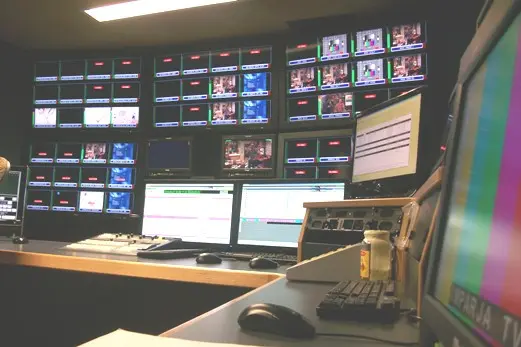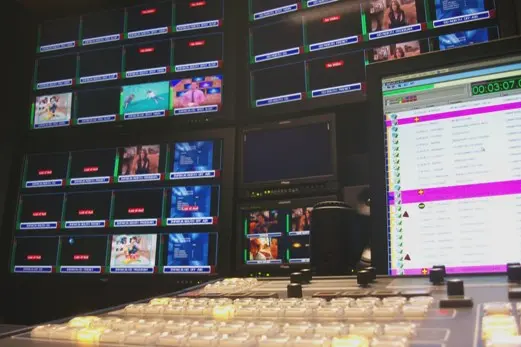Imparja, A True Multi-Market Broadcast System
27 August 2015Imparja selects Etere for a truly multi-market broadcast system.
Introduction
Nowadays, a reliable broadcast solution must allow television broadcasters to deliver contents arriving from different sources to different markets through different channels; in the majority of cases, broadcasters varies their delivered contents according to the market to which they are delivered (i.e.: state, network, etc) while maintaining the same programming structure and most important, a unified commercial management system.
This sort of distributed but integrated broadcasts can only be achieved with a comprehensive system able to guarantee a centralized management of programming and multi-market delivery; this document will describe why Etere is the only solution that goes beyond the concept of multi-channel broadcasting and becomes into a true multi-market solution.
Abstract Solution
Almost all multi-market broadcasters manage their programming from a centralized system that receives contents from multiple providers and subsequently deliver them to multiple markets through “semi-independent” channels; these channels are interconnected with the central office where the structure is prepared and contents organized, each channel is able to draw up their local programming content and local advertising segments.
Multi-market channels typically include commercial advertising interspersed within specific events such as programs, sport events and live news; these channels are mainly transmitted on predefined markets, and in particular cases they may be transmitted on more than one market at the same time (e.g.: a national live event).
In order to permit an integrated management, Etere will send on-air one channel for each market, accomplishing in this way the following key points:
■ Simultaneous transmissions across multiple markets,
■ Full support of markets with different time zones (pre-delay mode),
■ Creation of a master schedule to be drawn up separately for each market,
■ Capability to performing a reconciliation including the traffic schedule, the as-run log, the discrepancy report,
■ Distributed playout channels must be synchronized but with a certain level of autonomy
Detailed Solution
The implementation of Etere as the solution for a centralized management of programming and multi-market delivery, allows television stations to keep full control over the entire broadcasting process; this because Etere integrates a comprehensive set of modules specifically oriented to cover each complex phase of the broadcasting chain, while make them work synchronously to avoid any possible fault or incongruence between networks, ensuring an overall efficiency and reliability.
The previous figure illustrates the way on which Etere carry outs the multi-market broadcast process by focusing the solution on the Programming, Playout and Traffic sub-systems, and implementing them as described below:
■ Playout: Implementation of an automation channel for each market to which the broadcaster delivers its contents,
■ Programming: An unified management of the schedules, that is, the programming of each playout channel will be based on the main schedule structure,
■ Traffic: All data regarding commercial events is reconciled into a single traffic system
The Daylight-Saving Issue
It may occur that not all markets to which a television broadcaster intends to deliver its contents are located within the same time zone, Etere override this complex characteristic due to the support of UTC time offsets.
All channels are managed with a time adjustment value (offset) that permits to easily visualize and program events taking into account their other possible airing times. The system stores all these time-offsets into the main database, so it will be able to adjust the scheduling time of all markets with respect to a main channel time zone.
For example, in a DST scenario where North, Central and South Australia regions has a different UTC offset, the system characteristics will be:
■ A single programming structure will be managed for all regions,
■ Automation, Scheduling and Traffic times will be the same,
■ Each operator will see its own programming in local time,
■ Schedules will be managed by the system in the basis of their time offset with the main channel,
■ Channels will ingest from their relative feed(s) at their scheduled times, avoiding any possible saturation
Programming System - Events Scheduling
The programming of events into the schedule structure is performed through the Executive Editor application, which permits to draw up the schedule with versatility and frame accuracy; and allows managing up to 10 alternative schedules besides the main one. Executive Editor is directly connected to the automation module, so any change operation performed here is immediately updated in Automation and vice versa.
As shown in the figure below, scheduled events arriving from the content providers are marked as live events, and they are ready to be automatically recorded at the indicated time without any operator’s intervention.
Unexpected Durations
Etere supports unexpected durations of scheduled events, so if for example a Live News last either less or more than its expected duration, all related commercials (and the rest of the schedule) will remain consistent by allowing the operator to quickly adjust schedule content and timings.
Commercial Management
Etere Air Sales allows an independent programming between networks under a unified accounting environment, so it will be possible to organize the advertising space of each channel separately and in accordance to the market to which they are delivered while keeping all financial data interconnected to a centralized traffic department.
Shared Traffic Schedules
Etere Air Sales allows stations to build frame accurate schedules to be “shared” on real-time between networks (i.e.: copy from one channel to another) including:
■ The programming structure which is based on blocks,
■ All scheduled events excepting specific types (e.g.: split programs, etc),
■ Traffic data such as price lists,
■ Updated durations of scheduled recordings.
It allows manipulating schedules in a way that a custom transmission playlist will be produced for each market; these final schedules can include both commercial and not-commercial programs. All schedules “shared” between channels are linked to a main database, ensuring that all timings are correct and to flag any material that is not present in the on-air database or video-server.
Independent Commercial Breaks
Etere Air Sales allows an independent programming of commercials between networks, so it will be possible to organize the advertising space each network separately from the other ones while maintaining a high level of integration since all traffic systems are managed under the same environment:
Playout System
Since each market counts with its own automation channel, their broadcasts are independent between them from a physical point of view, that is, each facility will go on air even if one of the others fails, bringing a high-level of scalability and fault tolerance.
The master control will be located in the main facility, and will go live on local time. Each automation channel will send on air a schedule composed by events locally scheduled and live events arriving from the main station.
Overall View of Channels
This user-friendly module will bring a global view of all schedules, allowing the possibility in real time to make changes to the schedule (according to assigned rights), or in any case to see what is on air on all the channels at any given moment.
Achievable Benefits
Through the implementation of Etere, television broadcasters will achieve besides a comprehensive media control and a reliable programming management, also a “semi-independent” playout on each market in which their contents are delivered.
In the basis of the aforementioned elements, Etere will improve broadcaster’s overall system in several points amongst which the most remarkable ones are mentioned below:
■ Ability to control multiple market television programming,
■ A centralized but customized playout for different markets,
■ Use of identical traffic schedules with different market-oriented contents,
■ Flexible and coordinated re-scheduling of events,
■ Automatic synchronization between networks,
■ Simultaneous broadcasts across multiple markets,
■ Support for immediate and delayed transmission,
■ Automatic management of unexpected durations during live events,
■ Unified accounting and billing between multiple channels,
■ Real-time preview and selection of events,
■ Automatic ingest and routing of multiple feeds
 Back
Back

